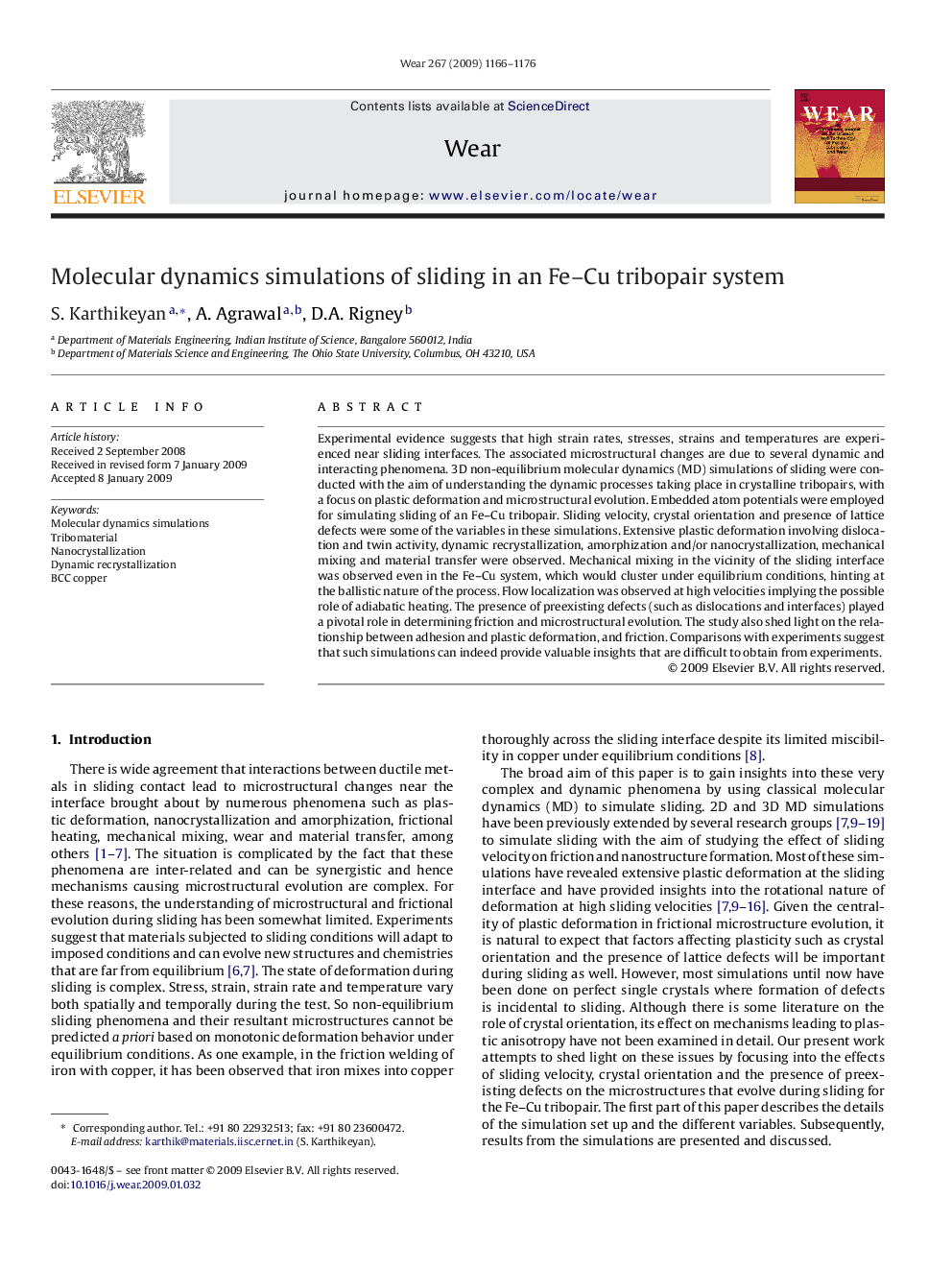| Article ID | Journal | Published Year | Pages | File Type |
|---|---|---|---|---|
| 619381 | Wear | 2009 | 11 Pages |
Abstract
Experimental evidence suggests that high strain rates, stresses, strains and temperatures are experienced near sliding interfaces. The associated microstructural changes are due to several dynamic and interacting phenomena. 3D non-equilibrium molecular dynamics (MD) simulations of sliding were conducted with the aim of understanding the dynamic processes taking place in crystalline tribopairs, with a focus on plastic deformation and microstructural evolution. Embedded atom potentials were employed for simulating sliding of an Fe-Cu tribopair. Sliding velocity, crystal orientation and presence of lattice defects were some of the variables in these simulations. Extensive plastic deformation involving dislocation and twin activity, dynamic recrystallization, amorphization and/or nanocrystallization, mechanical mixing and material transfer were observed. Mechanical mixing in the vicinity of the sliding interface was observed even in the Fe-Cu system, which would cluster under equilibrium conditions, hinting at the ballistic nature of the process. Flow localization was observed at high velocities implying the possible role of adiabatic heating. The presence of preexisting defects (such as dislocations and interfaces) played a pivotal role in determining friction and microstructural evolution. The study also shed light on the relationship between adhesion and plastic deformation, and friction. Comparisons with experiments suggest that such simulations can indeed provide valuable insights that are difficult to obtain from experiments.
Related Topics
Physical Sciences and Engineering
Chemical Engineering
Colloid and Surface Chemistry
Authors
S. Karthikeyan, A. Agrawal, D.A. Rigney,
